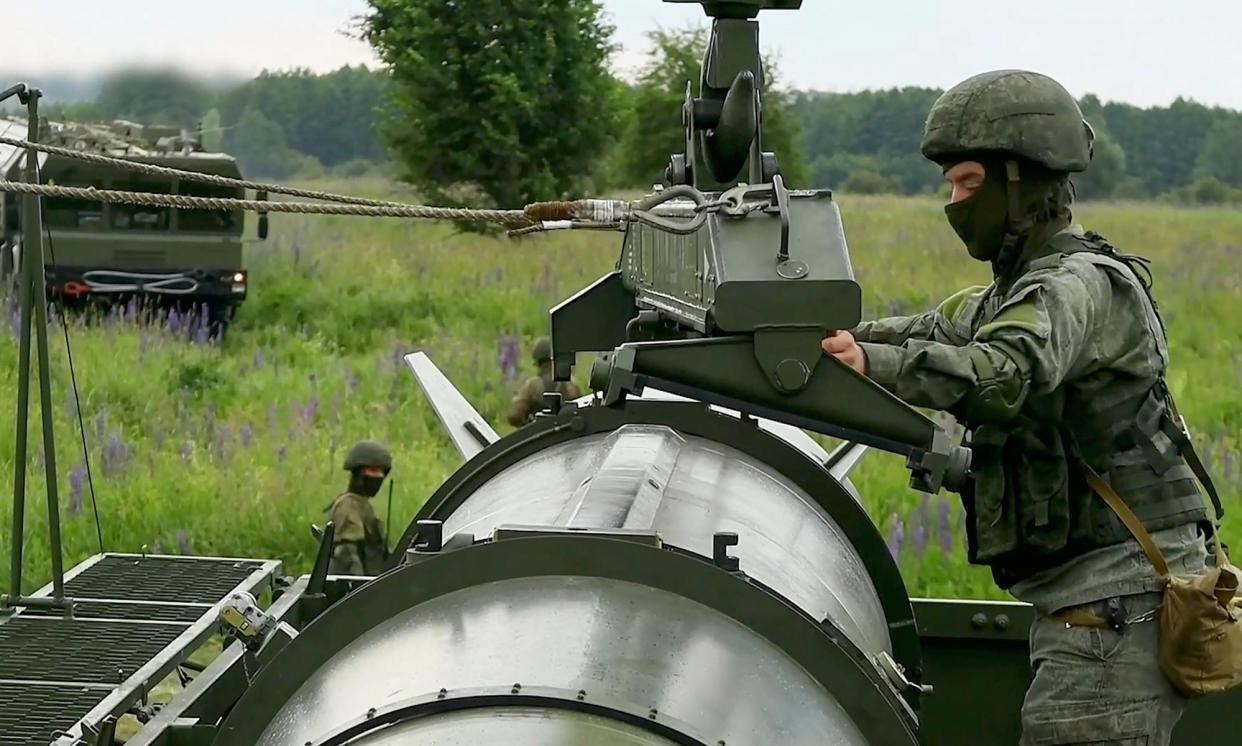Global spending on nuclear weapons up 13% in record rise

Global spending on nuclear weapons is estimated to have increased by 13% to a record $91.4bn during 2023, according to calculations from the International Campaign to Abolish Nuclear Weapons (Ican) pressure group.
The new total, which is up $10.7bn from the previous year, is driven largely by sharply increased defence budgets in the US, at a time of wider geopolitical uncertainty caused by Russia’s invasion of Ukraine and the Israel-Hamas war.
All nine of the world’s nuclear armed nations are spending more, Ican added, with China judged to be the second largest spender with a budget of $11.9bn – though Beijing’s total is well below the $51.5bn attributed to the US.
Russia is the third largest spender, at $8.3bn, followed by the UK ($8.1bn) and France ($6.1bn), although estimates for authoritarian states or the three countries with undeclared nuclear programmes (India, Pakistan and Israel) are all complicated by a lack of transparency.
Susy Snyder, one of the author’s of the research, warned that nuclear states are “on course to be spending $100bn a year on nuclear weapons” and argued that the money could be used on environmental and social programmes instead.
“These billions could have been used for combating climate change and saving animals and plants that sustain life on Earth from extinction, not to mention improving health and education services around the world,” Snyder said.
Over the past five years, since Ican began its research, nuclear weapons spending has soared by 34%, or $23.2bn. Spending by the US increased by 45% during that time and by 43% in the UK, and on current trends will surpass $100bn in 2024.
Related: Talk in Iran about change in nuclear weapons policy must stop, UN expert says
Russia’s president, Vladimir Putin, has referred repeatedly to his country’s nuclear arsenal to warn the west of a direct military intervention in Ukraine since launching the full-scale invasion in February 2022. Russia also began a series of exercises simulating the use of tactical nuclear weapons near the Ukrainian border in May.
Other data, complied by the Stockholm International Peace Research Institute (Sipri), shows that the number of active nuclear warheads is also slightly higher, at 9,585, driven largely by China increasing its arsenal to 500 from 410.
The largest nuclear states remain, as they have done since the 1950s, the US and Russia, who possess about 90% of all warheads. Russia has 4,380 nuclear warheads deployed or in storage, compared with the US on 3,708, the researchers added.
The Sipri researchers said “Russia is estimated to have deployed about 36 more warheads with operational forces than in January 2023,” though they added there was no firm evidence that Moscow had deployed any of its nuclear missiles in Belarus, despite public statements from Putin and Belarus’s president Alexander Lukashenko.
Britain’s nuclear weapon arsenal is estimated to be unchanged at 225 (as is France’s on 290), but three years ago the UK said it would raise a cap on the number of warheads it was willing to stockpile to 260 Trident warheads to counter perceived threats from Russia and China.
Wilfred Wan, the director of Sipri’s weapons of mass destruction programme, said: “We have not seen nuclear weapons playing such a prominent role in international relations since the cold war.”
He contrasted the numbers of warheads deployed with a joint statement signed by the US, UK, France, China and Russia in 2022. Building on earlier statements, the five countries declared that “a nuclear war cannot be won and must never be fought”.

 Yahoo News
Yahoo News 
